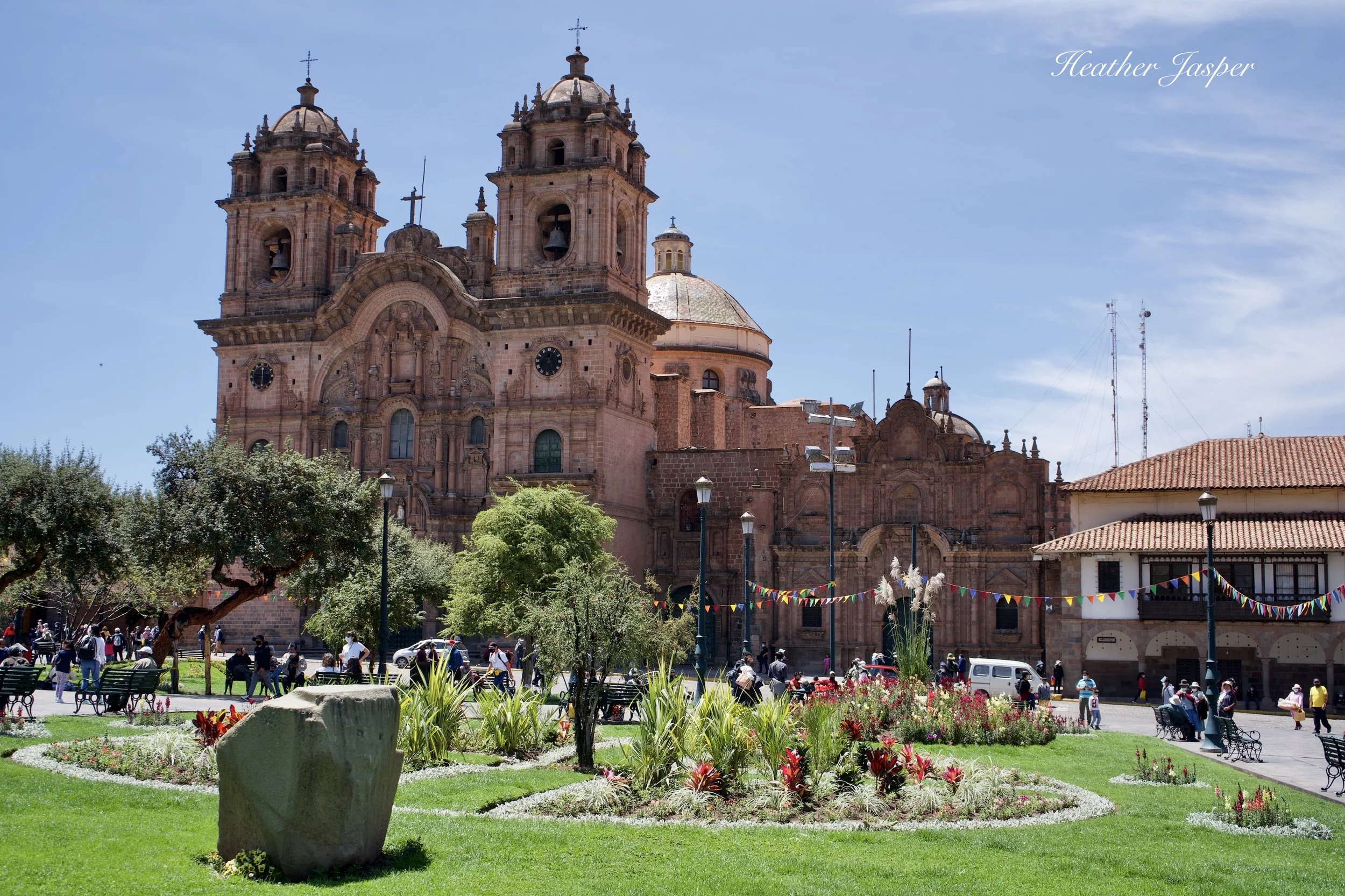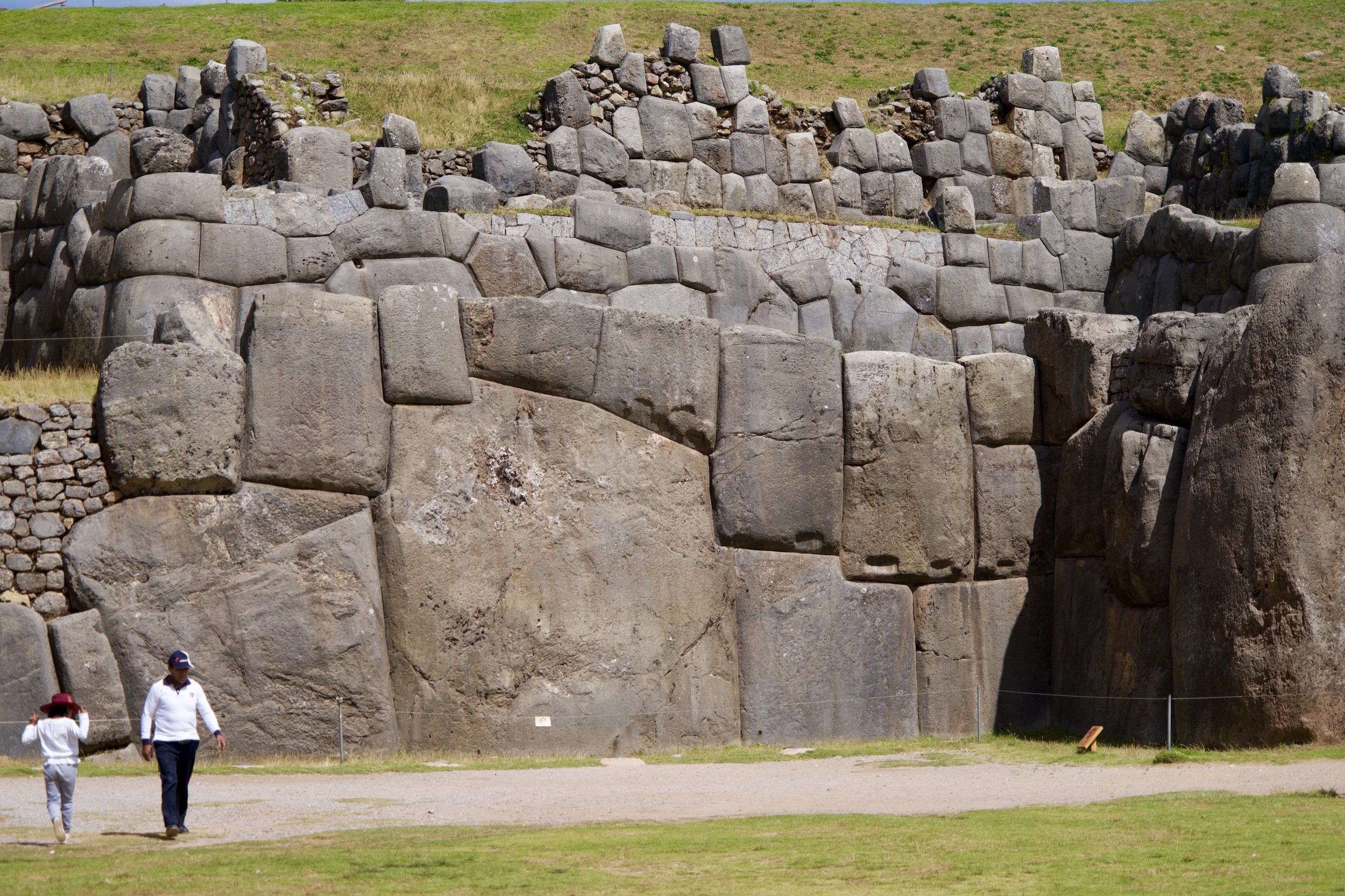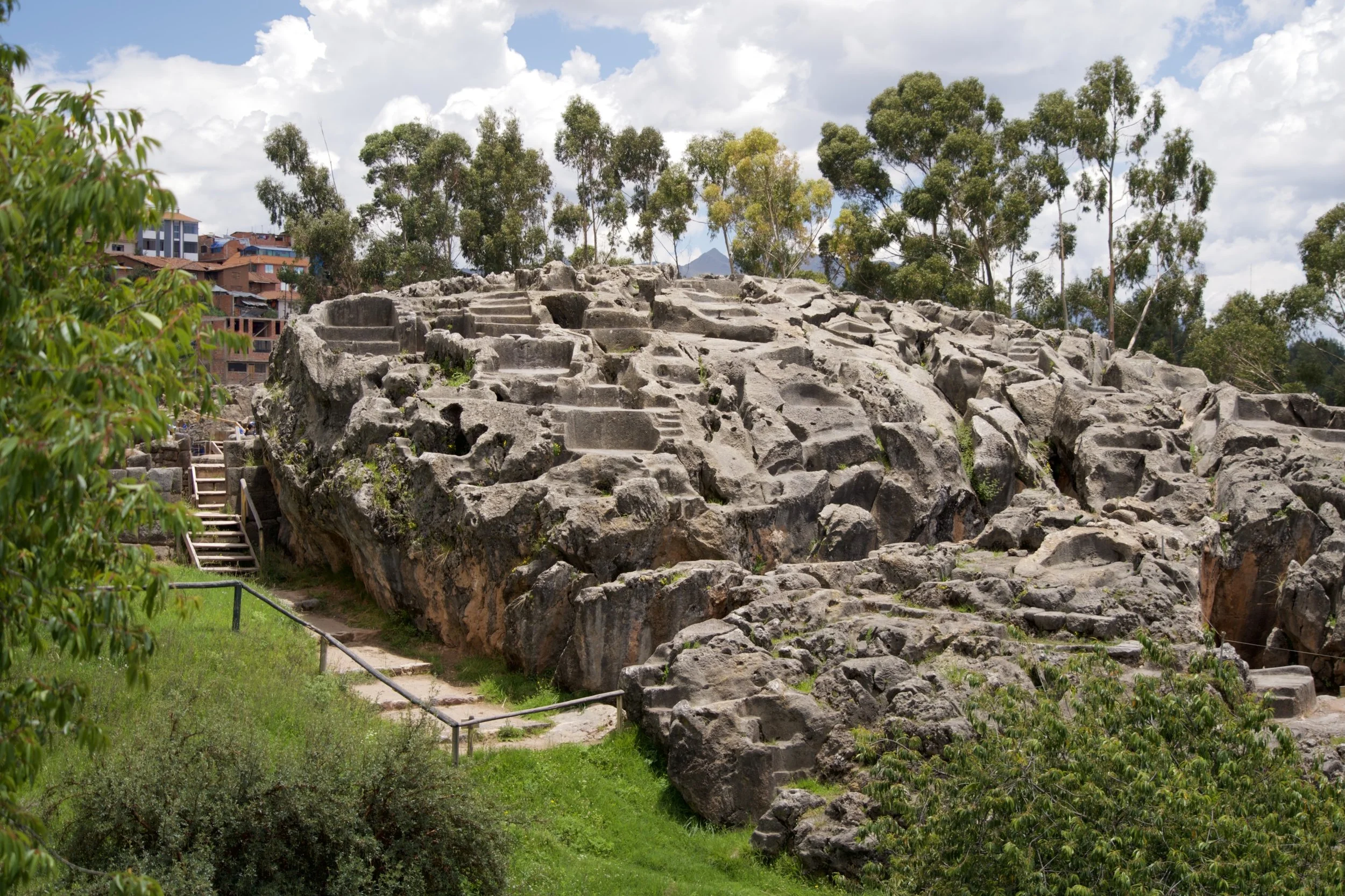The whole city of Cusco is an archeological site.
Be prepared to see ancient walls even in new hotels or restaurants, and certainly everywhere you walk.
The first four sites below are owned by the government and require the Boleto Turístico del Cusco or Cusco Tourist Ticket (BTC). Others either have separate entrance fees or are free. I highly recommend a licensed guide for all of them.
Below are a few of the sites you can’t miss.
Sacsayhuamán
Looming over the city, Sacsayhuamán is a temple mistakenly labeled a fortress in most guide books. Archeologists have found ritual offerings from all corners of the Inca’s Tahuantinsuyu, clearly indicating that this was not a military structure.
You can walk uphill from San Blas or take the Huerto or Christo Blanco busses. The BTC is required.
Note: It’s pronounced sack-sigh-wah-mon.
Q’enqo
Q’enqo is a fascinating site and some archeologists categorize the central stone, pictured here, as a kind of map. There are passages and tunnels carved into this massive piece of limestone bedrock.
You can get here on the Huerto bus from Cusco or walk up from San Blas. The BTC is required.
Puka Pukará
Higher up in the hills, on the road from Cusco to Pisac, are the red walls of Puka Pukará. In Quechua, puka means red and pukará is a fortress. You can get here on the Huerto bus from Cusco. The BTC is required.
Tambomachay
This wall embedded into the hillside has many fountains, designed over 500 years ago and still flowing. It’s commonly called a water “temple” and was where the Inca went to perform rituals and ceremonies associated with water.
You can get here on the Huerto bus from Cusco. The BTC is required.
Qorikancha
The gray wall in front of the church was once plated with gold. Qori means gold in Quechua and kancha is an enclosure. The Spanish built the Church of Santo Domingo on top of the Inca temple, but you can still see the original temples for the sun and the moon inside the church. This is my favorite example of how Peruvians live with both Quechua and Spanish cultures.
Because it’s owned by the Catholic Church, it’s not part of the BTC.
Plaza de Arms
Don’t be fooled by the colonial church and cathedral on Cusco’s Plaza de Armas. The site was first the central square for the Inca. The land was actually a swamp until the Inca drained it and filled the area with trees and open spaces for celebrations and rituals.
Hatun Rumiyoc
The famous 12 Angle Stone is called Hatun Rumiyoc in Quechua. Hatun is big and rumi is stone, making the name literally “big stone.” Once you recognize it, you’ll see it everywhere in Cusco. It’s on the label of Cusqueña beer and on many souvenirs. This is in a public alleyway, so there’s no fee.
Alleyways
The historic center of Cusco is full of pedestrian alleyways that you could fit a handcart or a mule through, but not a car. Motorcycles are prohibited and they are the most pleasant part of Cusco for those who like to visit the city on foot. Most are wheelchair accessible.









